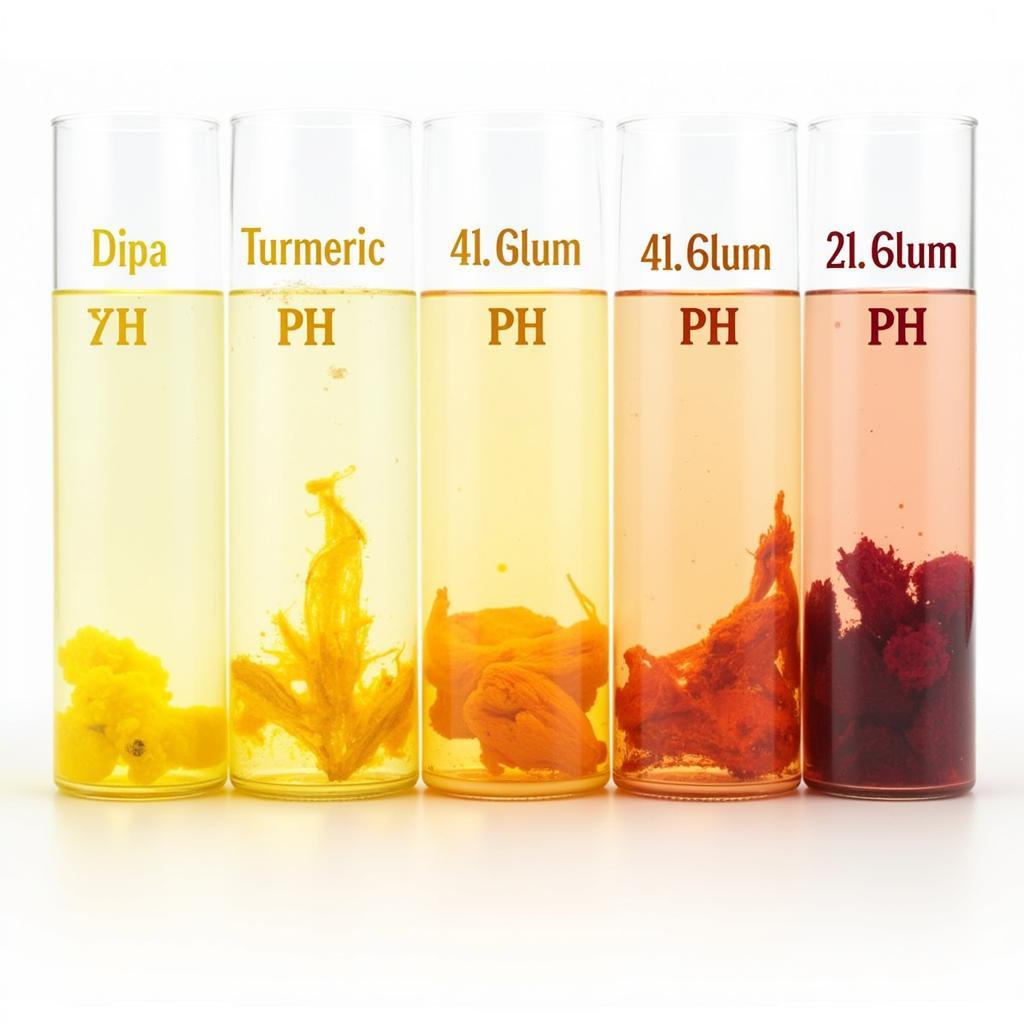Cuni, more commonly known as turmeric, is a vibrant spice known for its rich color and health benefits. But why does cuni change color in water so fast? The answer lies in its chemical composition, specifically the presence of curcumin, the primary active compound responsible for turmeric’s characteristic yellow-orange hue. This intriguing phenomenon involves chemical reactions influenced by pH levels and other substances.
Unveiling the Chemistry Behind Turmeric’s Color Change
Turmeric’s rapid color transformation in water is due to curcumin’s sensitivity to changes in pH. Curcumin acts as a natural indicator, meaning it changes color in response to the acidity or alkalinity of a solution. In neutral water, turmeric maintains its yellow-orange color. However, when exposed to an acidic solution (low pH), curcumin shifts towards a more vibrant yellow. Conversely, in an alkaline environment (high pH), the color dramatically changes to a reddish-brown or even a deep purple.
How pH Affects Curcumin
The molecular structure of curcumin contains phenolic hydroxyl groups that are responsible for its color. These groups can lose or gain protons depending on the surrounding pH. In acidic conditions, the hydroxyl groups retain their protons, resulting in the yellow color. In alkaline conditions, the hydroxyl groups lose protons, leading to a change in the molecule’s electron configuration and the observed reddish-brown or purple color.
 Turmeric Color Change on pH Scale
Turmeric Color Change on pH Scale
Other Factors Influencing Turmeric’s Color Change
While pH is the primary driver of the color change, other factors can also play a role. The temperature of the water, the presence of other chemicals or minerals, and even the concentration of the turmeric itself can influence the intensity and speed of the color shift. For instance, adding baking soda, an alkaline substance, to turmeric water will rapidly turn the solution a deep red-brown. Conversely, adding lemon juice, an acid, will intensify the yellow hue.
The Role of Temperature and Concentration
Higher temperatures can accelerate the color change reaction, as heat increases molecular movement and interaction. Similarly, a higher concentration of turmeric in water will result in a more intense color change, as there are more curcumin molecules available to react with the surrounding environment.
Practical Applications of Turmeric’s Color Change
This fascinating color-changing property of turmeric has several practical applications. It is commonly used as a natural dye in textiles and food. Its pH sensitivity makes it useful as a simple indicator in science experiments and educational demonstrations.
Turmeric as a Natural Indicator
Turmeric can be used to create homemade pH indicators for testing the acidity or alkalinity of various household substances. This simple experiment can provide a visual and engaging way to learn about pH levels.
“Turmeric’s ability to quickly change color in response to pH makes it a valuable tool for visualizing chemical reactions,” explains Dr. Anya Sharma, a chemist specializing in natural indicators. “Its readily available nature and vibrant color changes make it an excellent choice for educational purposes.”
Conclusion
The rapid color change of cuni (turmeric) in water is a fascinating example of a natural pH indicator at work. Driven by the chemical properties of curcumin, the color shift provides a visual representation of the surrounding environment’s acidity or alkalinity. This unique characteristic makes turmeric not only a vibrant spice but also a valuable tool in various applications, from dyeing fabrics to conducting simple science experiments. Understanding the science behind this phenomenon allows us to appreciate the complexities of nature and the practical uses of its gifts.
FAQs
- What is the main component responsible for turmeric’s color? (Curcumin)
- What happens to turmeric in acidic water? (Turns bright yellow)
- What happens to turmeric in alkaline water? (Turns reddish-brown or purple)
- Can turmeric be used as a pH indicator? (Yes)
- What other factors can influence the color change? (Temperature and concentration)
- What are some practical applications of turmeric’s color change? (Natural dye, pH indicator)
- Why does the color change happen so fast? (Due to the high reactivity of curcumin to pH changes)
Need assistance with color solutions for your home? Contact us at Phone Number: 0373298888, Email: [email protected], or visit us at 86 Cầu Giấy, Hà Nội. Our customer service team is available 24/7.

